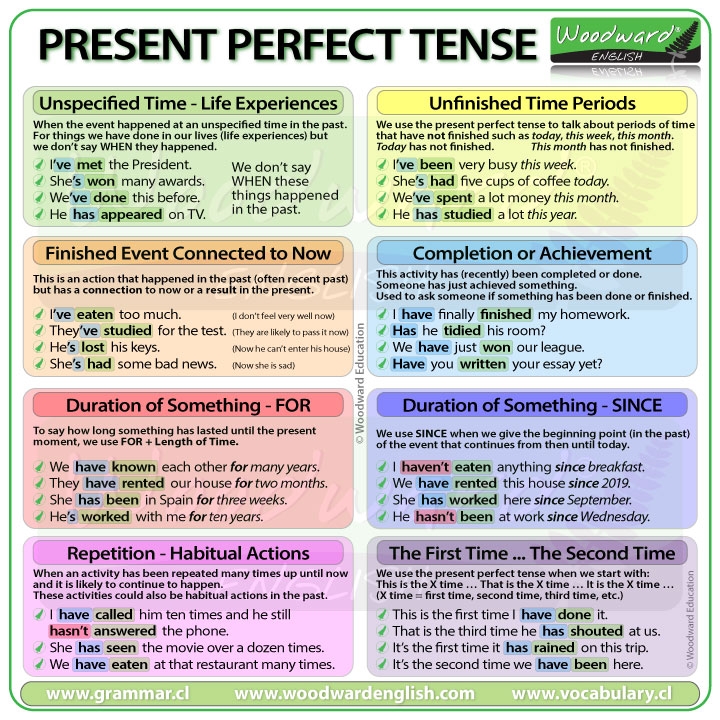Understanding the present perfect tense is essential in mastering the English language. This tense is used to indicate actions that have been completed at some point in the past but have relevance to the present. By knowing the rules of the present perfect tense, you can effectively communicate about past events and their impact on the present.
Whether you are writing an essay, giving a presentation, or having a conversation, using the present perfect tense correctly can enhance your language skills and convey your message clearly to others.
Present Perfect Tense Rules
1. The present perfect tense is formed by using the auxiliary verb “have” or “has” followed by the past participle of the main verb. For example, “I have finished my homework.” In this sentence, “have” is the auxiliary verb and “finished” is the past participle of the main verb “finish.”
2. The present perfect tense is used to talk about experiences, actions that have occurred in the past but are still relevant in the present. For example, “I have visited Paris three times.” This sentence indicates that the speaker has visited Paris in the past and may do so again in the future.
3. The present perfect tense is often used with time expressions such as “since,” “for,” “just,” and “already.” For example, “I have lived in this city for five years.” This sentence shows that the speaker has been living in the city for a specific period of time.
4. The present perfect tense is not used with specific time expressions that refer to a definite past time, such as “yesterday,” “last week,” or “in 2010.” In such cases, the simple past tense is more appropriate. For example, “I went to the cinema yesterday” instead of “I have gone to the cinema yesterday.”
5. The present perfect tense can also be used to express past actions that have a present result or impact. For example, “She has lost her keys.” This sentence suggests that the person is currently in a situation where they do not have their keys.
In conclusion, mastering the present perfect tense is crucial for effective communication in English. By understanding and applying the rules of this tense, you can convey past events with relevance to the present accurately and confidently.
